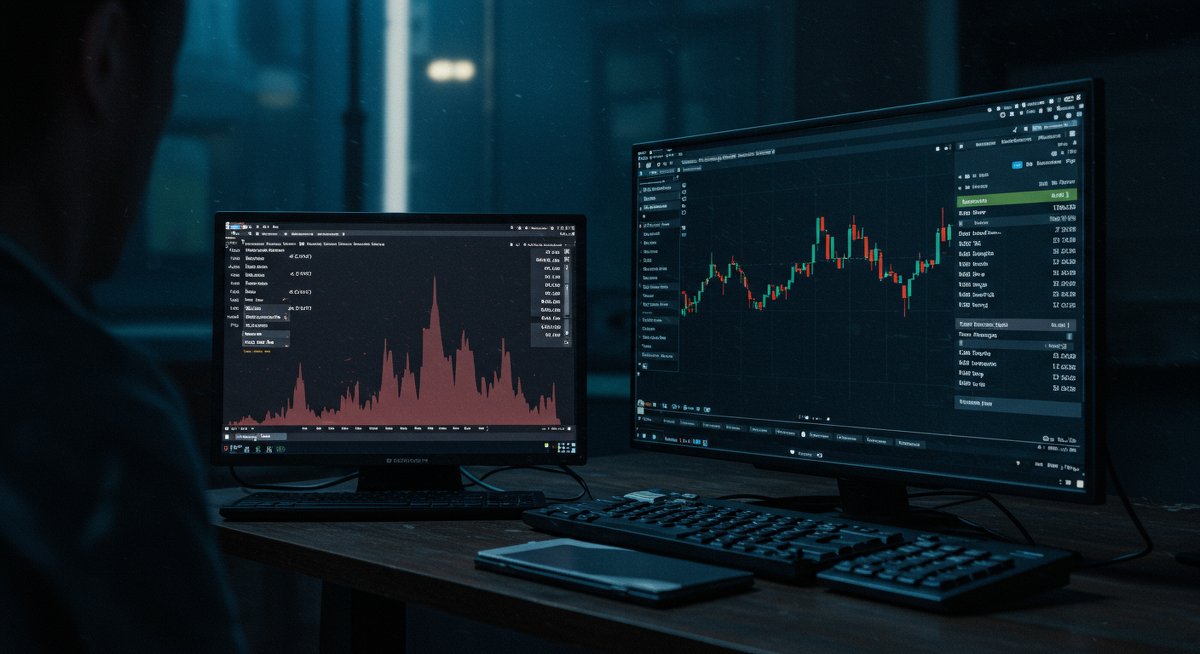Have you ever initiated a crypto swap, only to watch in dismay as the transaction stalled, disappeared, or simply failed to complete? As an experienced international crypto trader, you know that time is money, and a stuck swap can be a costly headache. This guide provides a comprehensive action plan to tackle failed crypto swaps, ensuring you can recover your funds and get back to trading.

The Problem: What's Really Happening
Failed crypto swaps can happen for a multitude of reasons. Understanding these root causes is the first step to recovery.
- Network Congestion: High transaction volume on a blockchain (like Ethereum or Bitcoin) can lead to delays and failures. When the network is overloaded, your transaction might get stuck waiting for confirmation or even be dropped entirely.
- Insufficient Gas Fees: If you set gas fees too low, your transaction may not be prioritized by miners, leading to long delays or rejection. This is particularly common on Ethereum, where gas prices fluctuate wildly.
- Exchange Platform Issues: Sometimes, the exchange itself experiences technical glitches, maintenance periods, or even outages. These internal issues can cause swaps to fail or get stuck.
- Incorrect Transaction Details: Entering the wrong receiving address, sending the incorrect amount, or selecting an unsupported token can also lead to failed swaps. Always double-check all details before confirming.
- Smart Contract Errors: Decentralized exchanges (DEXs) rely on smart contracts to execute swaps. If there's a bug or vulnerability in the contract, your swap could fail.
Understanding these underlying issues is critical in crafting an effective recovery strategy, one that minimizes losses and maximizes your chances of success.
Example 1: A trader attempts a swap on a busy Saturday afternoon, using a low gas fee. The transaction gets stuck in the mempool for hours, and eventually fails. The trader loses the gas fees paid.
Example 2: An international trader inadvertently enters an incorrect receiving address during a swap on a centralized exchange. The funds go to an unknown address, and there's no way to recover them.
Example 3: During a planned maintenance period, a DEX experiences technical issues, and multiple swap transactions fail, causing funds to temporarily disappear from user wallets.
Expert Tip: Always check the status of the blockchain network before initiating a swap. Websites like Etherscan (for Ethereum) or Blockchair (for Bitcoin) can provide real-time information on network congestion and gas prices.
Step-by-Step Solution Framework
Recovering from a failed crypto swap requires a systematic approach. Here's a step-by-step framework to guide you:
Verify Transaction Status:
- Use a blockchain explorer (Etherscan, Blockchair, etc.) to check the transaction status using your transaction hash. Look for statuses like "Pending," "Failed," or "Confirmed."
- Check the exchange platform's transaction history to confirm the status of the swap.
Assess the Situation:
- If the transaction is pending for an extended period (hours or even days), it's likely stuck. If the status is "Failed," the funds haven't been transferred, but you might still be able to recover them.
- Note the error messages provided by the blockchain explorer or exchange platform. These messages can provide clues about the cause of the failure.
Contact Customer Support (if applicable):
- If the swap occurred on a centralized exchange, immediately contact customer support. Provide the transaction hash and any relevant details.
- Be patient and persistent. Follow up on your support ticket regularly, as resolution times can vary.
Retry the Swap (if appropriate):
- If the original transaction failed due to low gas fees, you can try resubmitting the transaction with a higher fee to incentivize miners. Some wallets offer a "speed up" or "replace by fee" option.
- On some DEXs, you can attempt a swap again, but make sure to carefully review the fees and details.
Contact a Crypto Recovery Service (as a last resort):
- If you can't recover your funds through the exchange or your own efforts, consider seeking help from a reputable crypto recovery service. Be extremely cautious, as scams are common. Do thorough research before trusting anyone with your private keys. Verify their credentials and check reviews.
Self-Recovery Steps: *If a transaction has failed and the funds haven't left your wallet you may be able to:
- Cancel the transaction: Some wallets allow you to cancel a pending transaction, essentially reversing it.
- Increase the Gas Limit: Occasionally, a transaction will fail because the gas limit was too low. Increasing the gas limit can solve this. *If a transaction has gone to the wrong address, there is no real way to recover the lost crypto.
Example 1: A trader uses a blockchain explorer and finds the transaction status is “failed” and identifies an error message, indicating the gas limit was too low. The trader can try resubmitting the transaction with a higher fee.
Example 2: A trader contacts the customer support of a centralized exchange regarding a failed transaction. After several days, the support team restores the funds to the trader's account.
Example 3: If the funds have been sent to an incorrect address, the funds are likely irretrievable, so the trader must accept the loss and learn from the mistake.
Common Mistakes to Avoid:
- Sending funds to an incorrect address.
- Providing insufficient gas fees.
- Ignoring platform maintenance announcements.
- Being impatient and making multiple transactions at once.
Expert Tip: Keep detailed records of all your transactions, including transaction hashes, dates, amounts, and any error messages. This information is crucial for both tracking and recovery.

Prevention Strategies
The best way to deal with failed crypto swaps is to prevent them in the first place. Here are some proactive measures:
- Use Reliable Exchanges: Trade on reputable centralized exchanges with a proven track record of security and customer support. If you are using a DEX, make sure you have used it before and are familiar with the smart contracts and token requirements.
- Double-Check Addresses: Always verify the receiving address before initiating a swap. Copy and paste addresses carefully, and double-check the first and last few characters.
- Set Appropriate Gas Fees: Pay attention to current gas prices and set fees that are competitive, especially during peak trading hours.
- Stay Informed: Keep up-to-date with the latest news and announcements from the exchanges you use. This can help you avoid issues related to maintenance or platform upgrades.
- Use Multi-Factor Authentication (MFA): Enable MFA on your exchange accounts to add an extra layer of security and protect your funds from unauthorized access.
- Small Test Swaps: Before making a large swap, test it by conducting a small transaction to ensure everything works correctly.
- Hardware Wallets: Use hardware wallets to store your private keys. This can protect you against hacking and key theft.
Example 1: A trader always confirms the recipient address by sending a small amount of crypto first, avoiding sending a large sum to the wrong address.
Example 2: By reading a newsletter the trader knows an exchange will be undergoing maintenance, so they delay their swap until the maintenance is complete.
Example 3: A trader always uses a hardware wallet, preventing their keys from being stolen even if their computer is compromised.
Expert Tip: Subscribe to exchange platform's social media channels, and look for alerts on possible outages or scams.
International Legal Protections
International crypto trading is subject to a complex web of regulations. The legal protections available to you in the event of a failed swap depend on several factors:
- Jurisdiction: Crypto regulations vary widely by country. Some jurisdictions offer stronger consumer protections than others.
- Exchange Location: The location of the exchange you use can affect your legal options. Exchanges based in countries with robust regulations may be more accountable.
- Transaction Type: The type of swap (e.g., centralized vs. decentralized) can affect your legal recourse.
- Terms of Service: The terms of service of the exchange or platform you used will outline your rights and responsibilities.
Seeking Legal Advice:
- Consult a lawyer specializing in crypto law in your jurisdiction. They can advise you on your rights and options.
- Document everything. Keep detailed records of the failed swap, including screenshots, transaction hashes, and communication with the exchange.
- Consider mediation or arbitration. Many exchanges include dispute resolution mechanisms in their terms of service.
- Local Laws. Crypto laws vary by location, so consult local laws.
Example 1: An international trader, based in Europe, faces a failed swap on a regulated exchange. They have a strong legal standing, and can pursue legal action.
Example 2: A trader in a country with limited crypto regulations faces a failed swap on an unregulated exchange. Recovering funds legally may be more challenging.
Example 3: The trader finds the exchange is based in the same jurisdiction as them, allowing them more consumer protections.
Common Pitfalls:
- Not understanding local regulations.
- Ignoring the terms of service.
- Delaying legal action, which may limit your options.
Expert Tip: Research and understand the regulatory landscape of the country you trade in before initiating any crypto transactions. This will help you understand the legal protections available to you.
Your Action Checklist
Here’s a checklist to guide you through the process of recovering funds from a failed crypto swap:
- Verify Transaction Status: Check transaction hash on a blockchain explorer.
- Assess the Situation: Determine the cause of failure.
- Contact Customer Support: For centralized exchanges, reach out to support.
- Retry the Swap: Resubmit with higher fees if applicable.
- Explore Recovery Services: As a last resort, consider reputable services.
- Legal Consultation: Seek advice if necessary.
By following this action plan, you can significantly increase your chances of recovering funds from a failed crypto swap and continue trading with confidence as an experienced international trader. " , "tags_used": [ "stuck-transactions", "experienced-traders", "international-trading", "recovery-guides", "problem-solving", "exchange-platforms", "crypto-focus" ], "structure_selected": "problem-solving